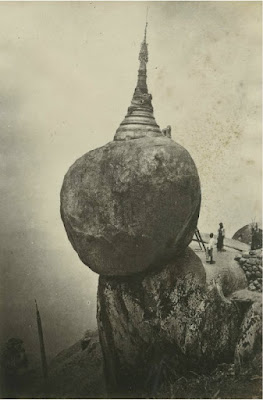First time I heard of something like “natural places” was some ten years ago at a conference in Slovenia. Several, mostly young researchers were proud to demonstrate an existence of non-man-made features on their sites, features that apparently gained a symbolic value before or during human habitation. For instance, trees which were incorporated in Neolithic ritual arrangements (henge monuments, if I recall correctly) or rock outcrops that seemed to have attracted special attention in the past. At first sight, such a concept does not seem particularly ground-breaking: we have always known that natural features inspired a wide range of symbolically charged responses in ancient societies, such as mountaintop sanctuaries (e.g. on Crete), depositions of artefacts in springs and rivers (e.g. the source of the Seine), or sacred forests that are well known from literary sources. I got intrigued, nevertheless, by an opportunity to introduce the concept of nature in archaeology, a concept which is, in a sense, our enemy.

Such a thing as a “natural place” (the opposite of which would be an “unnatural” one ?) is indeed somewhat clumsy and would not make much sense for geographers. All places are natural if they exist in the material world, although to a varying degree. Perhaps Piazza Navona, with its fountains and all, is less “natural” than a vineyard in Tuscany, but both of these places exist in particular topographic settings and both are related to particular visions of nature. So it may turn that the concept of a place being more or less natural is primarily reflecting a specific view of nature held by scientists, namely the occidental one, the critique of which has become a common place. But this would be to miss the whole point.
Reading through the book that initiated all the buzz, The Archaeology of Natural Places by Richard Bradely, it becomes clear that the basic idea is methodological – how can archaeologists study past societies in their unaltered, yet symbolically charged landscape? Archaeologists are, indeed, much concerned with distinction between the man-made and the natural: is the feature I’m excavating an old animal burrow or an ancient pit, is the terrace on which the site is located made by human design or by alluvial deposition etc. First we establish concrete traces of human presence and then we may proceed to deploy our favourite theory. However, this way of thinking puts archaeologists at danger of defining human culture in opposition to its environment.
The concept of natural places is not really about the culture – nature debate but about translating particular situations, namely those where unaltered natural features were given special attention, into archaeological discourse of “sites” and “places”. This is an important point because it enables us to study the relationships past societies had with their environment beyond simple functionalism (i.e. exploitation of resources). Crucially, this concept does not demand to abandon fundamental notions of culture as opposed to nature, that is, we may continue to focus on particular “sites” of human action. First we separate – e.g. an ancient camp which is not a natural fire, a burial mound which is not a geological anomaly – and then we try to understand the interplay of these “cultural” places in their “natural” setting. This is fundamental to the discipline and a direct philosophical critique of our inherent “naturalism” is rather unproductive.
But what about situations when nature and culture cannot be easily separated? Bradley is focused either on ritual places or on particular and imposing topographies, but what about ordinary agricultural fields or simple habitations? Take an ordinary settlement, a village, for example. There is a range of environmental factors that had to be taken into account by its founders. Is there enough productive land in the vicinity, is the site prone to flooding, are there other settlements in the neighbourhood etc.? Archaeologists are very happy when they are able to prove that not all environmental factors were respected and that some mysterious “symbolic” (or at least “social”) reason also played a certain role. Same thing again, nature vs culture. The problem is that the “nature” could only be known symbolically, through language and systems of meaning (or through GIS for that matter). Who might claim that knowledge is unrelated to tradition, no matter how “traditional” a society is perceived to be? To sum up, there is as much symbolism in everyday (agricultural, domestic) landscape, which we all know very well, but the archaeological paradigm of its own subject matter as non-nature is unsuitable for its study.
What would be the solution, then? I wouldn’t really know (besides that there are many books on the subject of culture-nature dichotomy, way too many to be absorbed easily). My venture in this debate is the experiment with topographic networks, which aims to divide the entire landscape into objects, theoretically knowable by humans, such as hills, valleys, summits etc. This means we are not obliged to dissociate, say, a hill form a settlement on it – they are but one geographical object. We can then proceed to study these composite objects and the way they are related to each other. I cannot develop the idea further – it’s too fresh – but something should come out, hopefully…
Bibliography
R. Bradley: An Archaeology of Natural Places, Routledge, 2000.